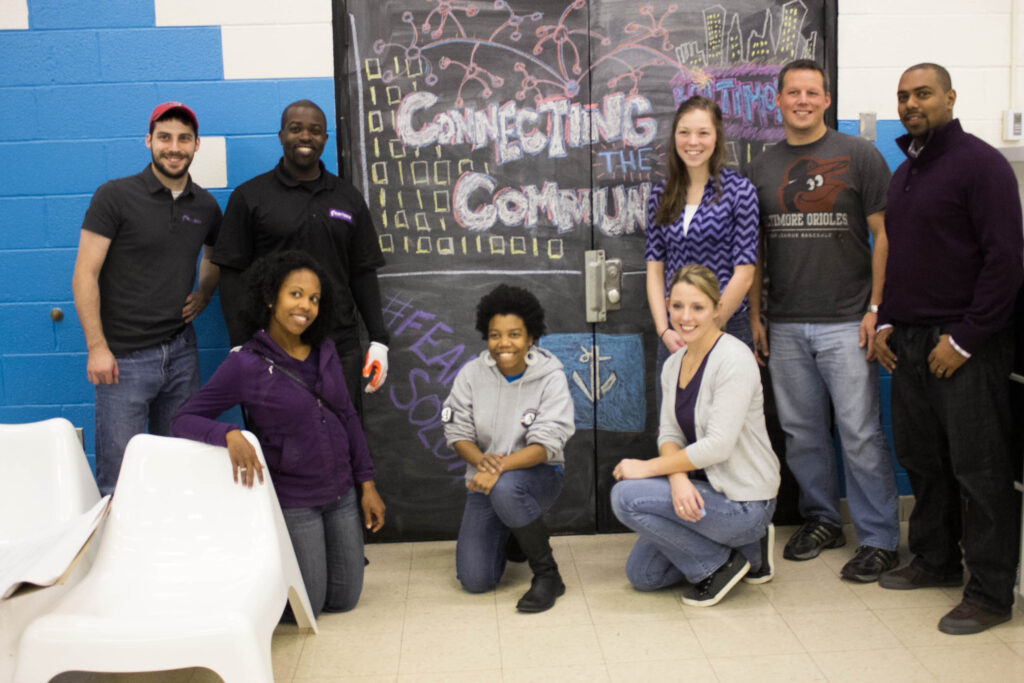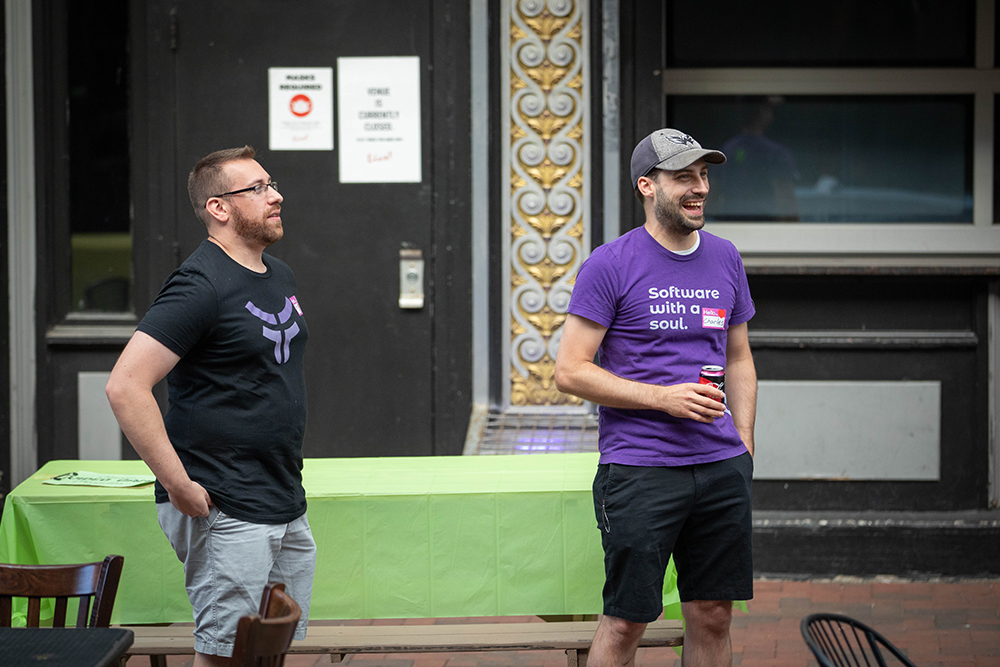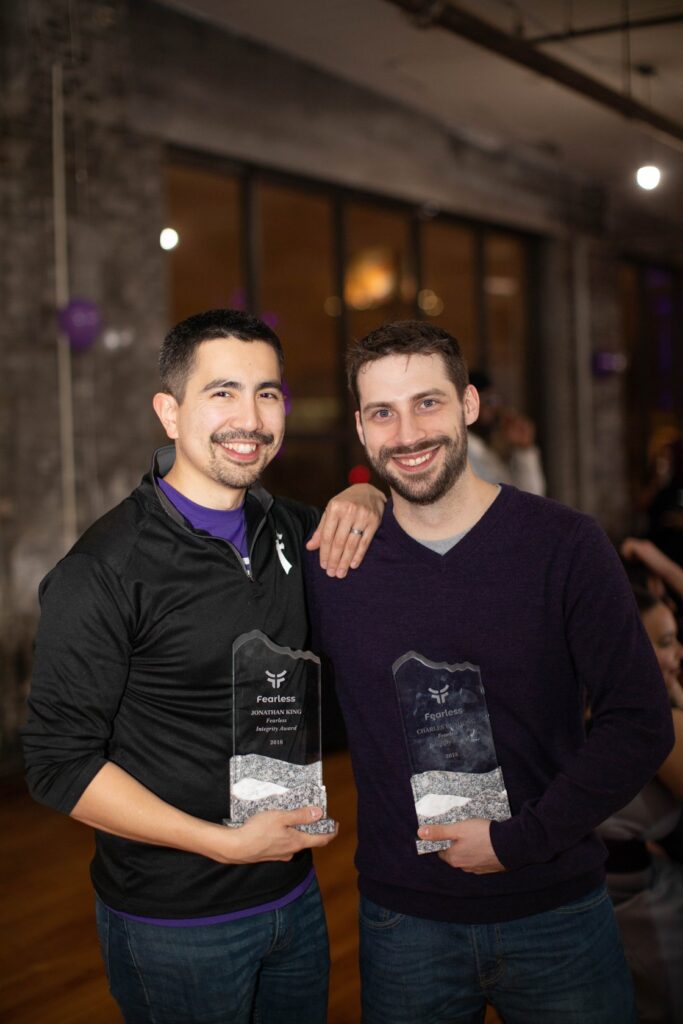Here at Fearless, we have a dynamic team of software engineers who lend their talent and expertise to our projects.
Having recently received a four-year, $67 million contract to transform the Medicaid and CHIP Program (MACPRO) system for the Centers for Medicare and Medicaid Services (CMS), the time has come for us to grow. It seemed like a good time to introduce you to the people who do so much of the transformative production inside of Fearless — the software engineers.
For this one, I’m taking a break from being the interviewee and grabbing my journalist hat to interview one of our lead engineers, Charles Bushong.
Title: Engineering Tech Lead
Years with Fearless: 10 (Joined October 29, 2012)
I’ve been a General Software Engineer, a Senior Engineer, a DevOps Engineer, and Site Reliability Engineer. I am currently an Engineering Tech Lead.
Being in this role of Engineering Tech Lead has been exciting because the industry has evolved during my time with Fearless. For instance, Cloud computing has developed dramatically since the mid-2000s, and the government started picking it up early in the 2010s. Getting to ride that wave as a Fearless engineer has been interesting.
My current team is with the Centers for Medicare and Medicaid Services (CMS). We are a 12-member team of infrastructure engineers all working together.
Interestingly, I am the only Fearless engineer on the team, and I serve as one of two co-leads.

My previous Fearless engineer role was with the Small Business Administration. This was a small, three-member, tight-knit, hands-on team.
Due to the nature of my current role as co-lead at CMS, I spend a lot of time helping other people on the team with para-programming, where I collaborate with team members and uplift their work.
In 2011, I was working for a company of approximately 100 employees that was sold to a much larger company of about 40,000 people. So, I was in the market to transition. One of my current Fearless teammates, Jon King, and I worked together then. We initially had intentions to start our own federal contracting company.
We didn’t know anything at all. So, we were looking for a company to hire us with the understanding that we would eventually break off and focus on our own company.
You and I met through a mutual acquaintance I think. At the time, Fearless was experiencing turnover with developers who would come on for a few months and then leave. I think you were looking for reliability with your software engineers and developers.
At the time, I was in graduate school, working on my MBA, and soon learned that I did not want to run a business. I quickly realized that I was unwilling to shift from the aspects of my career that I genuinely love to run the business. I’ll leave that side to you, man!
I have witnessed Fearless grow from five employees to what it is today, and it’s been fascinating.
I remain a Fearless Engineer because I am encouraged to focus on my passions and things that I like.
Every step of the way, Fearless has provided opportunities for me to try new things, and when I express disinterest in something, I am supported.
Fearless is special because we are intentional in our efforts to “walk the walk.”
Many companies “talk the talk,” but I don’t think they actually walk it, especially regarding Diversity, Equity, and Inclusion (DEI). It’s something I absolutely cherish about Fearless.
You can visit almost any company’s website and find a DEI page, but if you click the “Who We Are” page or explore their LinkedIn profile, you get a much different story.
Ages ago, we discussed how we would ensure that the diversity we value continued as Fearless grew because it’s easy to devolve into a more homogenous workforce if we are not deliberate.
When you established the 50/50 plan—the goal for women to make up 50 percent of the workforce and underrepresented racial groups to make up 50 percent—was something bold and ambitious that few companies I see are willing to take on.
Honestly, this lofty goal was a major concern of mine for a while. Based solely on the math, I thought we were setting impossible goals. Just think, if you have 50 percent in one pot and 50 percent in another pot, hiring a non-minority woman dilutes the other pot. So, I feared there would be a constant pull in both directions.
Eventually, I was able to see it in practice and understand the intentionality behind it. As a Fearless engineer, I realized that the point was to push us all to think in new ways about the work we put in to ensure our teams reflect who we are as a community.
I’ve seen it implemented over the years, and as an early skeptic, I’ve grown to appreciate it.
Early on, we felt that clothing—hoodies, T-shirts, and relaxed apparel— was the culture. But I think we have evolved from that ideology.
The Fearless culture is about a sense of belonging and being comfortable with who you are.
Over the years, we’ve succeeded in recruiting people who want to be part of a culture, not just part of the company.
At 200-plus employees, there is no singular driving force behind the culture anymore, and that’s ok. While we cannot scale the company’s feel, we understand that having a good foundation and creating good soil allows for new cultures to grow.
Honestly, you are a cultural personality. When Fearless was smaller, you would invite every new employee and their family to have dinner with your family. It was great! I still remember my dinner with you ten years ago.
While we can’t have family dinners anymore, that tradition laid the foundation for a culture that people can buy into—making sure to treat people with respect. While it seems obvious, I don’t think it is the culture of other companies.



The selectivity of determining customers has been a significant part of my decision to remain a Fearless engineer.
I started my career working on Department of Defense (DoD) contracts, which I also did once I transitioned to Fearless. While that business model was beneficial for us for a long time, there were challenges. Identifying the challenges of bridging that gap, Fearless migrated our focus away from purely DoD and toward other types of government tech.
This move led us to work with SBA, which was our first substantial engagement outside of DoD. It was super successful for Fearless.
Fearless engineers started by running SBA.gov and implementing their HUBZone map. Presently, we are still on a contract with SBA to manage the infrastructure for all of their public-facing websites.
Moving into the SBA space showed us all that we could be successful outside of DoD contracting. It broadened our vision. In fact, it led us to secure our current office space at Spark in Baltimore’s Power Plant LIVE. Previously, we worked in a small colocation at the University of Maryland Baltimore County (UMBC), where we only had a few desks and offices.
As we settled into the SBA contracts, we cultivated a strong culture, communication, and engagement. That expansive way of approaching what we could do in government really speaks to me.
As a Fearless engineer, I have had the privilege to work on SBA.gov and the HUBZone maps website, and it’s so interesting to know all it involved.
On those projects, we were lucky because our primary product owner at SBA was interested in pushing the SBA to move forward and take risks.
Fearless had recently started working with SBA’s Disaster Loan Assistance team when COVID-19 happened. Early on, we discussed how we could support the infrastructure and help them to utilize the cloud more effectively.
So, Fearless engineers had to figure out how to accept millions of loan applications with zero seconds’ notice. That was one of the more mission-driven moments I’ve had while contracting with the federal government.
Admittedly, I am a timely worker who does not work late hours, and here at Fearless, I am encouraged to work up to 40 hours. However, while working on the delivery of this project, I felt compelled to do what it took to turn the project around because it felt that important.
It felt meaningful. I could see the applications coming in and immediately appreciated the value being provided.
That was an exciting experience because you often sit and wonder, “Who is using this website?” In this case, we could visualize our work as a resource on which users depended.
The work Fearless engineers have done with SBA has been transformative, both for internal and external users.
I am currently with CMS, and we are working on creating a new development platform exclusively for CMS developers. We plan to develop a more stable and secure software for, hopefully, many projects at CMS.
Projects of this nature, whether inward or outward-facing, are impactful.
In general, working with SBA has been very professionally fulfilling. It’s probably my favorite.
Working with the SBA HUBZones and supporting the PPP applications during the height of COVID-19 has been rewarding.
The HUBZones program aims to award federal contracts to certified companies in specially-designated historically underutilized business (HUB) zones. The goal is to encourage people to live and work in these areas that need support. However, that raises the question, “Where are these areas?”
Congress made the HUBZones to set aside contracts for specific small businesses. Early on, while headquartered at UMBC, Fearless was in a HUBZone. To determine whether a potential new hire lived in a HUBZone, we created an internal map because the official HUBZone map was technologically deficient.
After sharing our internal HUBZone map with SBA, they wanted to make it the official HUBZone map. This was the beginning of a promising future with SBA.
So, showing the interactive online map to recruits, family, and friends is a compelling selling point.
I also served on the Infrastructure Automation Services Team at SBA for a while. On this project, Fearless engineers were dedicated to helping SBA software teams deploy to the cloud faster, launch better testing frameworks, establish better testing processes, and improve the overall workflow for efficiency as they conduct software development and deployments.
For instance, when we started working with SBA’s Small Business Innovation Research (SBIR) team, their deployment process required eight to ten employees to work late for two days. We immediately looked at the process and determined it was unacceptable. So, one of our priorities was shoring up the deployment process for their production environment so that they could confidently do deployments.


Fearless engineers eventually changed their deployment process to a 15-minute, one-person process.
That is the goal of what I do. I want to help real people improve their work environments.
By helping SBIR, we brought real people real value to their work-life balance. We gave them back family time because people were spending time away from their families for two days to do deployments.
Seeing the tangible value of dramatically simplifying people’s lives so they could have a work-life balance was a powerful motivator for me.
Charles Bushong
Because Fearless has grown up with the cloud, engineers have been able to evolve with the development of technology. For instance, when we started working with the SBA, we had to connect to their servers to deploy updates.
As the 2010s saw massive growth in web services, Fearless engineers set out to improve SBA’s development and deployment processes.
When I was with HUBZones, we said, “How can we make this better?” Once we made it better, we wanted to improve upon that.
Our team of engineers went from connecting to servers for update deployment automation to creating images of those servers to deploy updates.
Then, we employed emerging software and technology like Chef and dock work containers to improve the deployment speed. However, eventually, we realized that managing the servers, even with the improved technology, was pretty annoying. So, we employed Amazon’s serverless containers.
Working with new technology as it’s developed and released has been a great experience. It allows me to stay on top of new technology and test it with my customers who are willing to take risks and see the value in having these improved developer workflows.
Thank you to Charles for his years of service to both Fearless and to our mission to build software with a soul. Visit our virtual careers center for engineers to learn more about a career in government tech at Fearless.